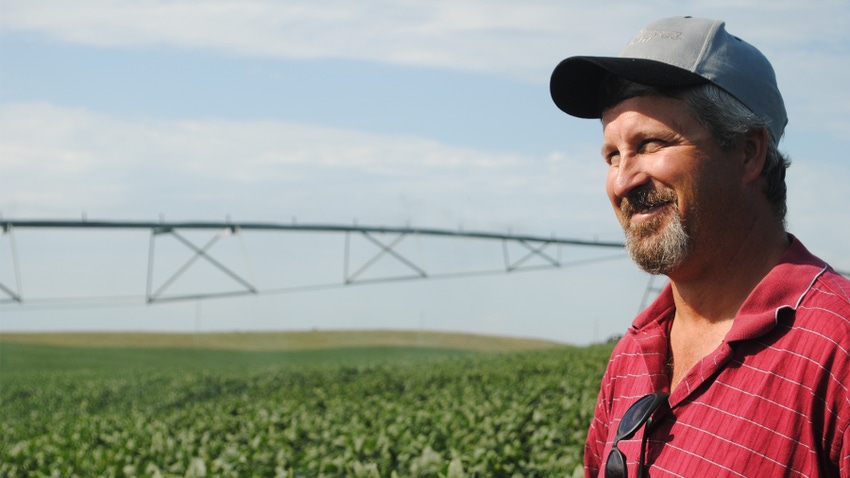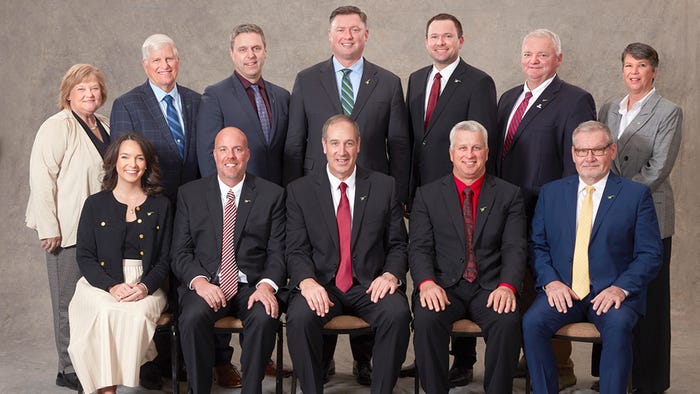
“Get involved.” That’s the piece of advice coming from the vice chair of the United Soybean Board.
Ed Lammers — who farms with his wife, Michelle, and son Kyle in northeast Nebraska — was recently named to the new vice chair post. Lammers grows soybeans, corn, alfalfa and rye, and he also grazes 200 cows, finishing out their home-raised calves.
He has served for the past eight years on the USB board, but he also has served in various roles with the Northeast Nebraska Corn Growers and Nebraska Soybean Board, along with numerous other local and regional committees and organizations.
“As the population gets more disconnected from production agriculture, an area we really need to do better at is service,” Lammers says. “There is great value in service [in farm organizations]. It is important to have a universal message through a group or organization. That’s the No. 1 reason I’ve found the need to be involved.”
Value of service
People want to know where their food comes from, and they want to feel good about their food choices, Lammers explains.
“We need to tell our story, or someone else will; that’s the real issue,” he says. “Along with that, serving in farm organizations is also a great opportunity to build relationships with other producers, to better understand them and the challenges they have, and to learn. It’s an opportunity for growth in many areas.”
These kinds of learning opportunities are important, as the Lammers family has added their sixth generation to the farm. Their son Kyle has embarked on a new farm enterprise, direct-marketing home-raised beef from the farm to the table.
“That’s one of the reasons he has been able to come back to the farm,” Lammers says. “For us, it’s a whole new area. We farm just across the road from where my grandfather and great-grandfather lived and farmed, so we feel fortunate to continue operating in this area.”

ALL IN: The United Soybean Board’s new executive committee includes Meagan Kaiser (front row, from left), past chair (ex-officio), Missouri; Brent Gatton, treasurer, Kentucky; Steve Reinhard, chair, Ohio; Ed Lammers, vice chair, Nebraska; Philip Good, secretary, Mississippi; April Hemmes (back row, from left), Iowa; Gary Berg, Illinois; Don Wyss, Indiana; Lucas Lentsch, USB incoming CEO; Matt Gast, North Dakota; Lawrence Sukalksi, Minnesota; and Susan Watkins, Virginia.
As USB vice chair, Lammers says the goal of the board is to continue to invest checkoff dollars to put money back into soybean producers’ pockets.
“The return on investment from the checkoff is $12 for every $1 invested,” he says. “But we continue looking at what more we can do and how we can improve sustainability and continue to lower our carbon footprint and tackle all those other issues our customers are concerned about.”
The vice chair’s role is to be a part of the executive committee and to head up the USB value alignment committee. The board is divided into six priority areas, and each area has a committee with board members serving on these committees, setting goals for the working groups that align with the USB strategic plan.
Being sustainable
With the concept of sustainability so crucial to soy customers, domestic and international, USB is working with producers to document the earth-friendly practices of producers, Lammers says.
“Soybean farmers are consistently looking for better practices on farm sustainability,” he says. “Not only reduced tillage and no-till, but also using less diesel fuel, fewer inputs and a lot of other avenues to attain sustainability. That’s what I’ve found interesting in this USB position, looking at sustainable practices, innovations and all of those characteristics from different regions and sharing that information publicly with producers.”
Through checkoff investments, new research through private companies and universities is improving genetics, looking at natural pest control and biologicals, working to understand what is available, and then getting that information out to growers.
“Part of this innovation comes in replacing petroleum in chemicals and fuel, but also in new products like a bio-based firefighting foam, for instance, that is being developed from soybean flour,” Lammers says. “It is environmentally safe and effective.”
Exports and domestic demand are growing. Lammers touts new processing, including new crush plants being built in Nebraska and around the country.
“There is strong demand here domestically and internationally for protein,” he says. “We are using more soy here, and there will be more soybean meal available for animal agriculture. We tell our customers that it’s better to have your protein sources in the U.S., where we have regulations to safeguard the public and the environment.”
New CEO elected
Lucas Lentsch, who previously served as CEO at Midwest Dairy, was recently named the new CEO of USB.
“We began the CEO search, hiring a search firm to go out and publicize the opening and collect credentials and resumes,” Lammers says about the search. “There were initially 150 candidates, and that was whittled down to three. After conducting three interviews, we went through the selection process and hired Lucas.”
Lentsch begins his new role as of Jan. 1. “I believe he is the right person for USB at the right time,” Lammers says.
Learn more about USB at unitedsoybean.org.
About the Author(s)
You May Also Like






